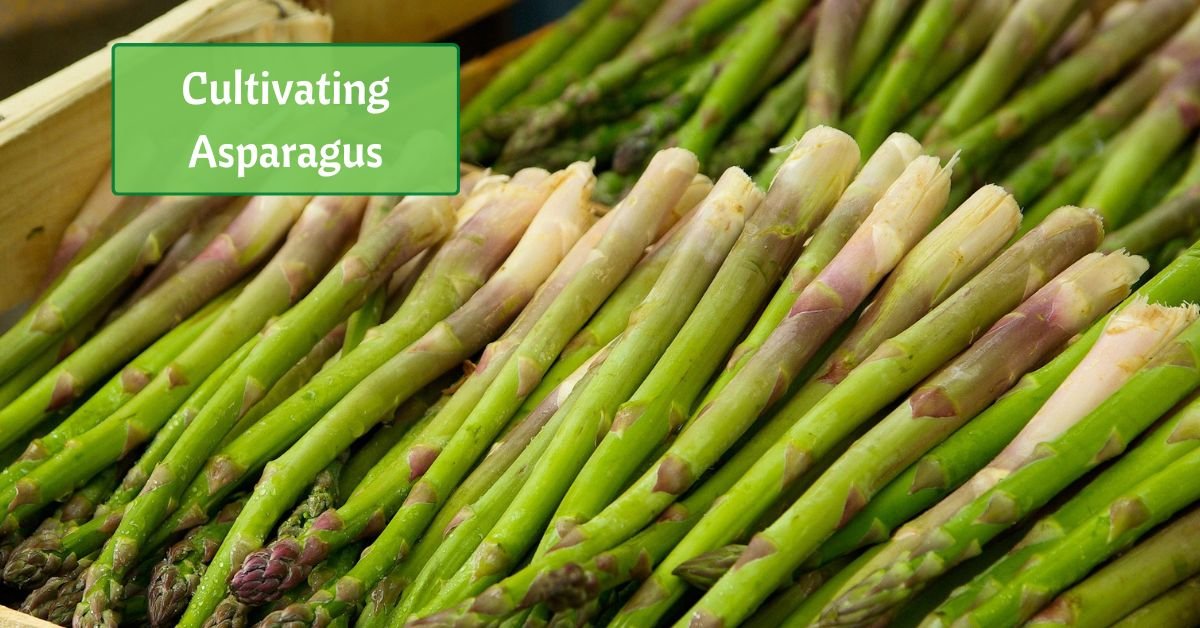Asparagus can be an awesome addition to your garden. It goes well in many dishes; you can even grill it! It’s also part of a small group of vegetables that are perennials. In this guide, we’ll explore the art of growing perennial asparagus, from selecting the right variety to enjoying your homegrown harvest.
As a perennial, asparagus will sprout year after year as long as you give it the proper care. Most vegetables have to be seeded each year. There are a few other perennials among vegetables, though, including rhubarb, chives, and horseradish.
Selecting the Perfect Asparagus Variety
The first step to cultivating asparagus is choosing what variety you want to grow. There are diverse types, including green, purple, and white. Select the variety that resonates with your taste and garden aesthetics.
Preparing To Plant Asparagus
It’s usually best to start asparagus from crowns. However, you can also start them from seeds. If you’re growing from crowns, you can skip down to the next section!
Start seeds indoors ten to twelve weeks before the last frost. Soak the seeds in water for 24 hours before planting them. Once the ground has thawed, they can be moved outdoors.
The soil should have a Ph between 6.5 and 7.5, be well-drained, and get plenty of sun.
For the first season, you can use a temporary bed for them. In the fall, you’ll notice that some have produced berries while others have not. The ones with berries are females and will produce less asparagus. You can discard those. Only keep the berry-less males to keep.
Pick a long-term home for your asparagus. It may take 2 – 3 seasons before it’s ready for harvest, but it can continue to produce for 10 to 15 years.
Make sure to add compost to provide the ongoing nourishment that asparagus craves.
Order Asparagus Seeds Online
Planting Your Asparagus Crowns
Now, let’s look at how to plant your asparagus in the ground.
Dig trenches that are 6-8 inches deep. Gently place the asparagus crowns in the trenches with their buds facing upward. Space the crowns 12-18 inches apart.
Gradually fill the trenches with soil as your asparagus grows, leaving a few inches of crown exposed initially and covering them fully as they mature.
Caring for Your Perennial Asparagus
To ensure a thriving perennial asparagus patch, provide consistent care and attention.
Maintain a regular watering schedule to ensure the soil stays evenly moist, supporting the robust growth of your plants.
Also, apply a protective layer of mulch to help retain moisture, suppress weeds, and regulate soil temperature, ensuring your asparagus thrives year after year.
Keep the asparagus bed meticulously weed-free to minimize competition for nutrients and maintain the health of your plants.
Dealing With Pests
Asparagus beetles, cutworms, and aphids are the pests you have to worry about when you grow this vegetable.
Asparagus beetles can survive over the winter, so it’s important to make sure you follow basic care steps like cleaning and weeding well through the season.
Cutworm collars can help keep your plants safe from these annoying pests. They’re easy to make and worthwhile, considering their effect on preserving your vegetables!
Aphids love almost any plant you can grow in your garden, so be on the lookout for them before they can spread. You can learn more about them – and how to control them – in this article.
Weeding, avoiding overwatering, and proper general care can help keep pests at bay. You might also consider attracting insects that prey on these pests. If necessary, insecticidal soap or organic pest care can help get you back on top of an infestation.
Harvesting Asparagus Spears
The moment of harvest is a wonderful experience, no matter what you’re growing. Here are some tips to help you know when and how to harvest your asparagus.
You’ll need patience during the first year of growing asparagus. Allow them to grow strong to establish strong roots and focus on fern growth. This is a long-term plan and you won’t harvest it until the second year.
Once that second growing season rolls around, you can look forward to enjoying your asparagus. Harvest the spears by gently snapping or cutting them when they reach 6-8 inches in height, just below the soil surface.
Sustainable Harvest
Continually harvest asparagus spears over a 6-8 week period during the growing season, while leaving the remaining spears to mature into ferns, ensuring next year’s perennial bounty.
Enjoying Homegrown Asparagus
Savoring your homegrown perennial asparagus is a culinary delight, backed by the knowledge that your efforts will bear fruit year after year.
Relish the taste of asparagus at its freshest by cooking or grilling the spears soon after harvest. You can experiment with a wide range of dishes, from simple roasted asparagus to intricate recipes, allowing the unique flavor of your perennial harvest to shine.
It’s also possible to freeze your surplus asparagus spears by blanching them, ensuring a taste of garden goodness all year long.
Cultivating asparagus in your garden is a rewarding process marked by the enduring satisfaction of nurturing a perennial treasure. From selecting the perfect variety to tending your perennial patch and savoring your harvest, every step requires careful attention that leads to a delicious goal!










